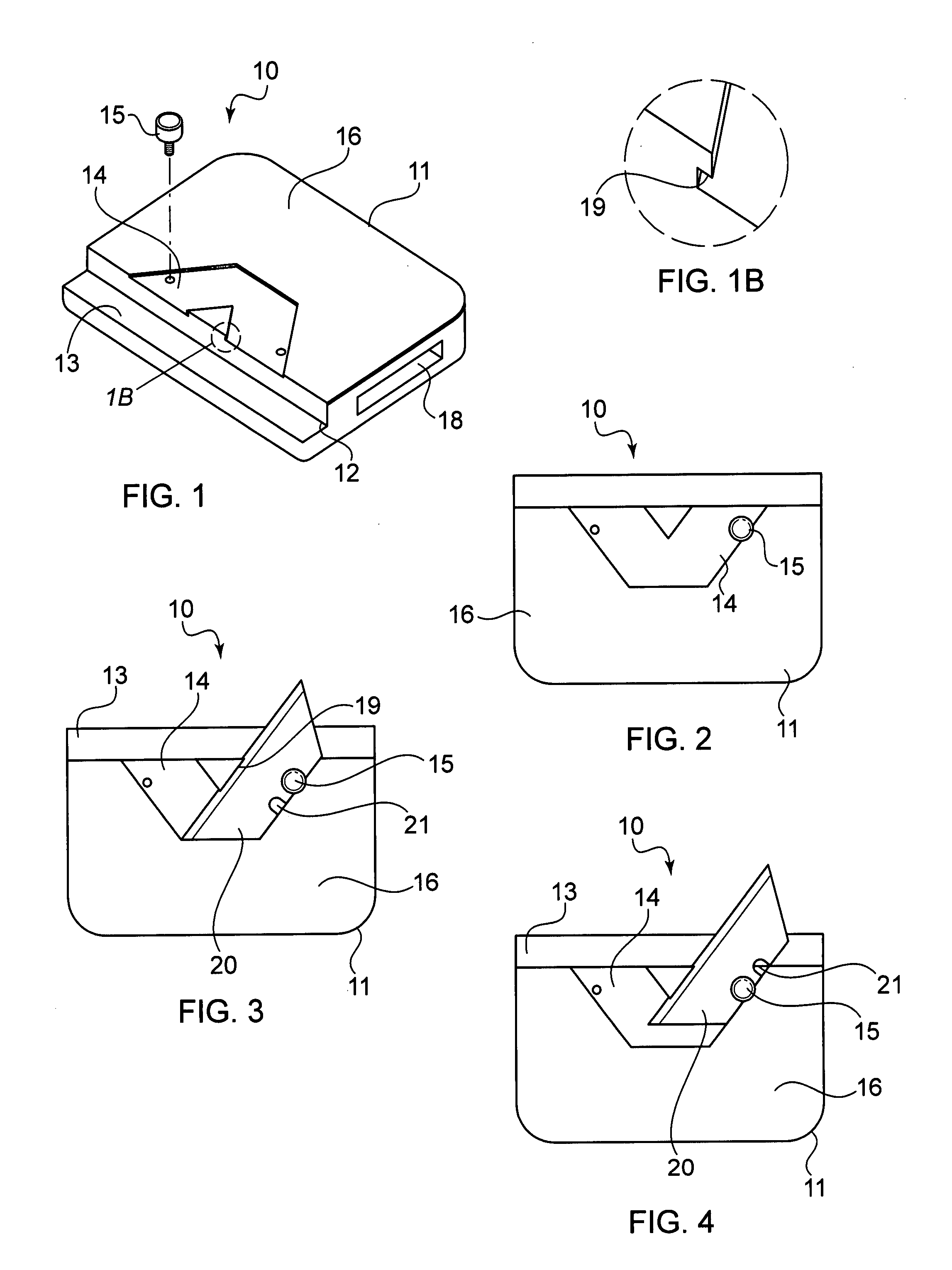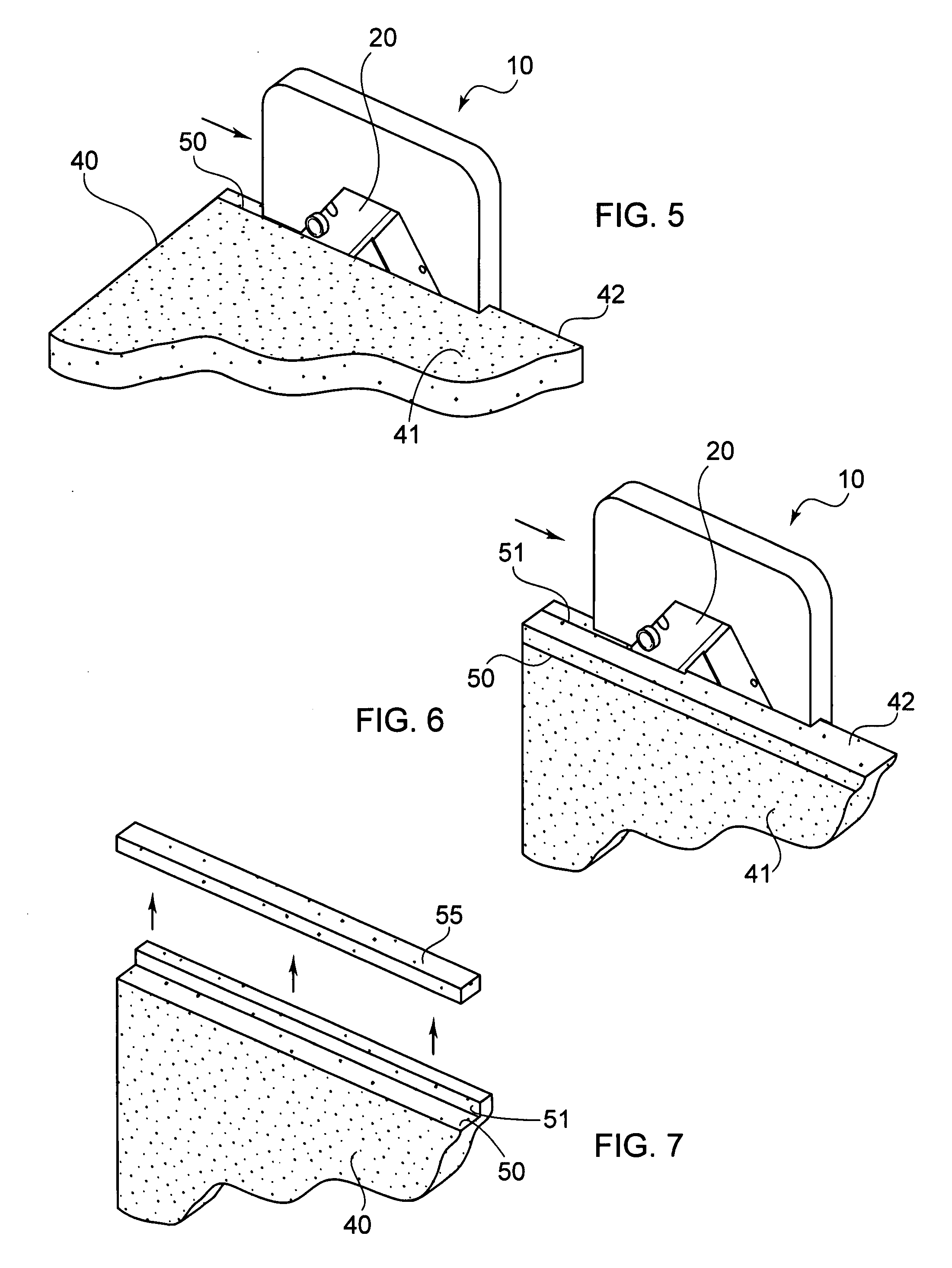Cutting tool for ceiling tiles
- Summary
- Abstract
- Description
- Claims
- Application Information
AI Technical Summary
Benefits of technology
Problems solved by technology
Method used
Image
Examples
Embodiment Construction
[0025]As shown in FIGS. 1-4, the cutting tool according to the invention comprises a holder a holder body 10 having a handle end 11, and a cutting guide comprising a rabbet 12 disposed opposite handle end 11. Extending from rabbet 12 is an extending rear face 13. There is a blade holding device in the form of a V-shaped notch 14 disposed on front face 16 of holder body 10.
[0026]A blade 20, as shown in FIG. 3 is mounted to holder body 10, by placing a notch 21 of blade 20 adjacent screw 15 and tightening screw 15. Blade 20 then rests securely in V-shaped notch 14. Notch 14 is configured to mount a blade to the holder body such that the blade projects a predetermined distance beyond the front face 16 and extends parallel with extending rear face 13. An alternative blade, such as a small hobby blade, could also be used with the holder body 10 according to the invention. Notch 14 has an overhanging lip 19, which extends over blade 20 and prevents blade 20 from slipping out of notch 14.
[...
PUM
 Login to View More
Login to View More Abstract
Description
Claims
Application Information
 Login to View More
Login to View More - R&D
- Intellectual Property
- Life Sciences
- Materials
- Tech Scout
- Unparalleled Data Quality
- Higher Quality Content
- 60% Fewer Hallucinations
Browse by: Latest US Patents, China's latest patents, Technical Efficacy Thesaurus, Application Domain, Technology Topic, Popular Technical Reports.
© 2025 PatSnap. All rights reserved.Legal|Privacy policy|Modern Slavery Act Transparency Statement|Sitemap|About US| Contact US: help@patsnap.com



